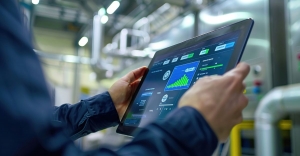please click here:
https://www.unicornendoscope.com/endoscopy-medical-equipment.html
Modern airway management has evolved dramatically over the last two decades, transitioning from traditional direct laryngoscopy to advanced visualization tools designed for safety, precision, and clinical efficiency. Among these innovations, the Flexible Video Laryngoscope (FVL) has emerged as one of the most versatile and impactful technologies. Its blend of flexibility, high-definition imaging, and maneuverability makes it indispensable for anesthesiologists, emergency physicians, intensivists, and ENT specialists.
This article explores the structure, functions, clinical value, comparisons, and purchasing considerations of flexible video laryngoscopes. It is crafted to provide a deep understanding of the device while offering practical guidance for medical device buyers, clinicians, and hospital procurement teams.
Understanding the Flexible Video Laryngoscope
A flexible video laryngoscope is a fiber-optic–based or CMOS-sensor–based visualization device that enables clinicians to inspect and manage the upper airway with real-time digital imaging. Unlike rigid laryngoscopes, this device incorporates a thin, pliable insertion tube capable of navigating anatomical curves with minimal patient discomfort.
Core Components
The device integrates several essential functions:
-
Insertion Tube: A slender, flexible tube designed for smooth navigation around anatomical structures.
-
Distal Camera or Fiber Optics: Captures high-resolution images of the vocal cords, epiglottis, and surrounding anatomy.
-
Articulation Mechanism: Provides distal bending capabilities controlled from the handle.
-
Light Source: Offers bright and consistent illumination through LED or fiber-optic transmission.
-
Display System: May be connected to a portable monitor, an integrated handheld screen, or a larger OR-based visualization system.
-
Working Channel (Optional): Allows suctioning, oxygen insufflation, or administration of topical anesthetic agents.
Clinical Purpose
The flexible video laryngoscope is used when traditional direct laryngoscopy might be difficult or unsafe. Key applications include:
-
Difficult airway intubation
-
Awake fiberoptic intubation
-
Airway assessment and diagnostic visualization
-
ENT evaluations such as vocal cord mobility examinations
-
Postoperative airway monitoring
-
Emergency airway rescue situations
Its ability to provide a clear airway view without aggressive manipulation makes it a highly adaptable choice in both routine and high-risk settings.
Why Flexible Video Laryngoscopes Are Transforming Airway Management
Technological advances have made flexible video laryngoscopes more affordable, more portable, and significantly more user-friendly. The shift from traditional fiber-optic bundles to digital CMOS sensors created a major leap in clarity and reliability.
Enhanced Visualization
The built-in camera delivers HD or full-HD quality imaging, enabling clinicians to see structures that are easily missed with rigid or indirect tools.
Bright illumination reveals subtle anatomical details such as edema, obstructions, and variations in vocal cord movement.
Improved Patient Safety
FVL offers:
-
Reduced neck manipulation, which is critical for trauma patients
-
Less stimulation and discomfort, especially during awake intubation
-
Lower risk of dental injuries
-
Efficient navigation around unexpected obstructions
This combination makes it a first-line tool for predicting and managing potentially difficult airways.
Versatility Across Specialties
While anesthesiology remains the primary application field, the device is increasingly adopted in:
-
Emergency medicine
-
Critical care
-
ENT outpatient clinics
-
Pulmonology
-
Prehospital and field medicine, where portability matters
Its adaptability across departments allows institutions to optimize equipment budgets while enhancing clinical outcomes.
Flexible Video Laryngoscope vs. Rigid Video Laryngoscope
To better understand its unique value, it helps to compare the flexible video laryngoscope with the commonly used rigid video laryngoscope.
Comparison Table: Flexible vs. Rigid Video Laryngoscope
| Feature / Attribute | Flexible Video Laryngoscope | Rigid Video Laryngoscope |
|---|---|---|
| Maneuverability | Excellent, able to navigate natural curves | Limited; depends on blade shape |
| Patient Comfort | High; minimal manipulation needed | Moderate; requires mouth opening and controlled movement |
| Imaging | HD camera at distal end; full visualization of airway | HD camera but limited angles |
| Best Use Case | Difficult airways, awake intubation, ENT assessments | Routine surgical intubation |
| Learning Curve | Moderate; requires practice in fine control | Generally shorter learning curve |
| Portability | High; lightweight handheld systems available | Moderate; more structured design |
| Cost | Slightly higher in many models | More cost-efficient in basic versions |
| Procedure Speed | Slower but more precise | Faster for routine intubation |
Interpretation
Rigid video laryngoscopes remain efficient for scheduled cases where intubation conditions are predictable. However, the flexible video laryngoscope excels in challenging airway conditions, offering a more adaptable and less intrusive approach. Many hospitals now deploy both tools as complementary solutions rather than competitors.
How the Flexible Video Laryngoscope Works
Understanding the operating mechanics enhances clinicians' confidence in using the device.
Insertion and Navigation
The clinician holds the handle with one hand while manipulating the articulation lever or knob to bend the distal tip. The flexible shaft gently advances into the airway, assisted by real-time visuals. This minimizes blind spots and keeps you aware of every movement.
Visualization
The camera transmits live images to the screen. Depending on the device, users may adjust brightness, zoom, image freeze, or recording functions.
Intubation
Once the vocal cords are visualized, the clinician advances an endotracheal tube preloaded over the scope. Controlled bending allows accurate guidance through the glottic opening.
Suctioning (If Equipped)
Models with working channels allow for removal of secretions, which is especially helpful during awake intubation. It also offers room for oxygen insufflation to improve oxygen reserves.
Clinical Scenarios Where FVL Provides Exceptional Value
Difficult Airway Anatomies
Patients with limited mouth opening, cervical spine injuries, tumors, edema, or obesity benefit significantly from FVL due to its low-force navigation.
Awake Intubation
Flexible video laryngoscopes reduce gag reflexes, maintain patient breathing, and improve success rates compared to more rigid tools.
Airway Trauma
When rigid devices could worsen injuries, FVL offers a low-impact alternative.
Pediatric Airway Assessment
Specialized pediatric models with smaller diameters allow safe and gentle airway visualization.
ENT Diagnostics
ENT specialists utilize flexible video laryngoscopes to examine:
-
Vocal cord paralysis
-
Laryngeal inflammation
-
Functional voice disorders
-
Post-intubation complications
High-resolution video recording helps document findings for clinical decisions.
Key Features to Consider When Purchasing a Flexible Video Laryngoscope
If you are involved in equipment procurement or clinical evaluation, certain features deserve serious consideration.
Image Quality
High-resolution CMOS sensors produce sharp, color-accurate imaging.
Look for:
-
Full-HD output
-
Anti-fog distal lens
-
Wide viewing angle
Diameter and Flexibility
Smaller diameter scopes enhance patient comfort, while high bending angles improve maneuverability.
Common diameters range from 2.8 mm to 5.2 mm depending on application.
Working Channel Options
Some procedures require suctioning or oxygen delivery.
If your practice involves frequent awake intubations, a version with a working channel is advantageous.
Display System
Options include:
-
Integrated handheld monitor
-
Wireless portable monitors
-
OR-mounted medical displays
Each has advantages depending on the clinical environment.
Disposable vs. Reusable
Reusable models reduce long-term cost but require strict sterilization.
Disposable scopes enhance infection control and simplify logistics. Many hospitals now deploy hybrid systems combining both.
Battery Life and Power Options
Portable FVL units must support long operating hours and quick recharge cycles.
Maintenance and Infection Control
A flexible video laryngoscope requires proper care to ensure optimal function and patient safety.
Cleaning Steps
Although exact steps vary by manufacturer, standard practice includes:
-
External wiping
-
Enzymatic soak
-
Channel flushing
-
Rinse and drying
-
High-level disinfection or sterilization
-
Optional storage in sealed sterile containers
Disposable versions reduce this workload dramatically.
Handling and Storage
Articulating sections are delicate, so devices must be stored in padded trays. Staff training should emphasize careful, controlled movements.
Trends and Innovations in Flexible Video Laryngoscopes
The market is evolving rapidly with new technologies.
Wireless and Portable Designs
Battery-powered handheld units with foldable displays allow rapid deployment in emergency or prehospital environments.
Integrated Artificial Intelligence
AI-assisted imaging is beginning to emerge, offering enhancements such as:
-
Automatic anatomical boundary detection
-
Image optimization
-
Voice-assisted navigation guidance
Improved Sterilization Systems
New materials and waterproofing designs allow faster turnaround and longer device lifespan.
Miniaturization
Advances in micro-optics and CMOS imaging have led to ultra-thin scopes, expanding pediatric and neonatal applications.
Choosing the Right Flexible Video Laryngoscope for Your Facility
Hospitals and clinics should consider the following criteria:
-
Expected case volume
-
Specialty needs
-
Staff training levels
-
Desired balance of portability and performance
-
Budget and service contract availability
Institutions focusing on airway safety often standardize on a system that supports both routine and emergency usage.
Conclusion
The flexible video laryngoscope is one of the most significant advancements in modern airway management. Its ability to deliver high-quality imaging through a soft, navigable shaft fundamentally changes how clinicians approach difficult airways. Its value extends beyond anesthesia, impacting emergency care, critical care, and ENT diagnostics.
By understanding its features and benefits, healthcare providers can ensure safer, more efficient, and more predictable airway outcomes.
Frequently Asked Questions
What is a flexible video laryngoscope used for?
It is used for airway visualization, difficult intubations, awake intubations, and ENT assessments involving the vocal cords and larynx.
Is a flexible video laryngoscope better than a rigid one?
Neither is universally better. Flexible scopes excel in difficult or anatomically complex airways, while rigid devices are faster for routine intubation.
Can flexible video laryngoscopes be used for pediatric patients?
Yes, pediatric-diameter versions exist and are commonly used for safe airway assessment in children.
Do flexible video laryngoscopes require special training?
They involve a learning curve because precise articulation control is essential, but training programs and simulation models greatly improve skill acquisition.
Are disposable flexible scopes worth buying?
Disposable scopes offer excellent infection control and convenience, especially in high-risk settings. Many hospitals adopt a mixed approach using both disposable and reusable models.
Summary
This article explores the flexible video laryngoscope, detailing its structure, advantages, clinical applications, and purchasing considerations. It compares flexible and rigid systems, highlights innovation trends, and offers practical guidance for safe, effective airway management across medical specialties.






